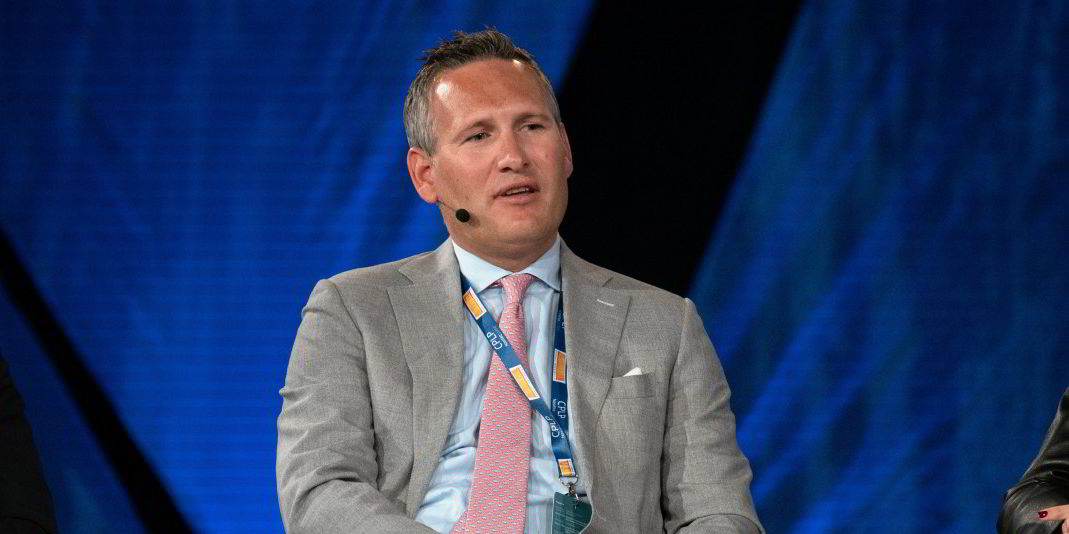AP Moller-Maersk shares fell as much as 15% in Copenhagen after it published fourth-quarter results on Thursday.
The Danish container liner posted Ebitda and gave guidance for 2024 that did not meet analysts’ expectations.
Maersk reported a $456m net loss for the quarter — a huge drop from the $4.98bn profit a year earlier.
The report “delivered a disappointing Q4 with weaker than expected results across divisions”, DNB analyst Jorgen Lian said in a note.
According to DNB, the top line was missed mainly due to a disappointing quarter for the Ocean division, but also weak results in Logistics & Services.
The Norwegian bank also sees “downside risk to 2024 consensus Ebitda on soft guidance”.
Maersk forecast 2024 Ebitda of $1bn-$6bn compared with a consensus of $7.1bn.
Consensus estimates should come down after the report but a lot of uncertainty still remains, according to DNB.
Fearnley Securities said “having seen rate developments and peer earnings, the miss shouldn’t be a large surprise”.
According to Fearnleys analyst Oystein Vaagen, the focus is on the guidance and outlook.
Maersk’s guidance factored in the duration of the Red Sea disruptions from the first quarter in the lower end to the full year in the higher end.
That “should disappoint markets”, as the guidance even in the higher end, and including Red Sea disruptions, is below analysts’ expectations.
Handelsbanken said the fourth-quarter result and 2024 guidance underline the oversupply impact.
The Swedish bank has had a “sell” recommendation because of “huge new capacity coming to the market, which keeps freight rates at low level”.
Equity analyst Timo Heinonen said Ebit from the Ocean division was loss-making and in the past it has been a “good entry point”.
“It could be different this time, since new capacity coming to the market is something never seen before. Hence, could be that pricing discipline is not working this time,” he said.
“Container volumes are growing but not enough to digest new capacity. Of course if Red Sea situation is not fixed, freight rates could remain at high level.”(Copyright)





